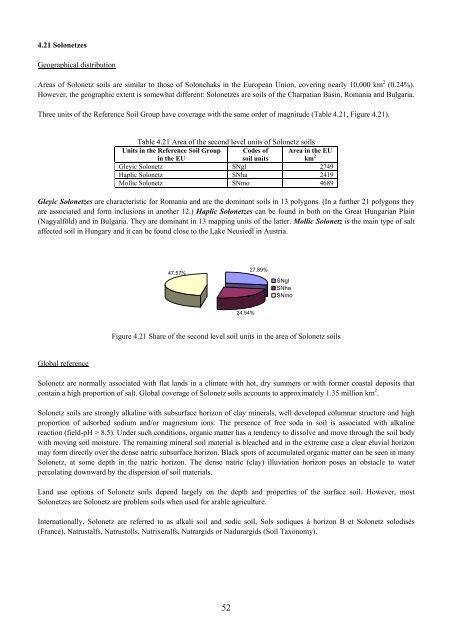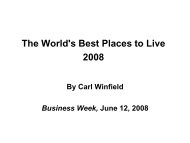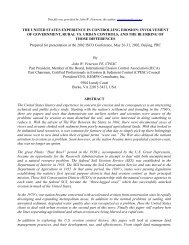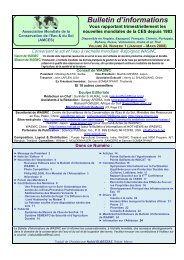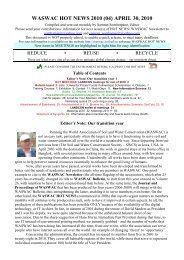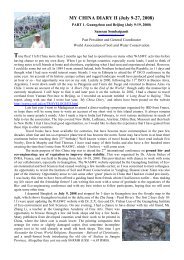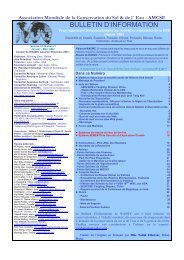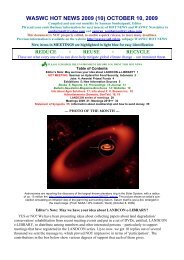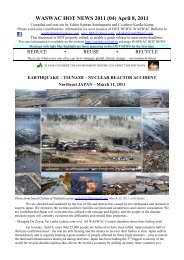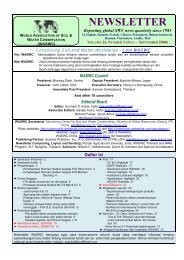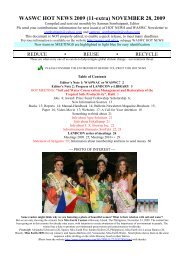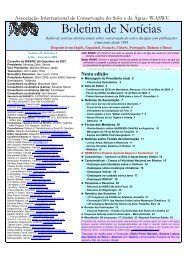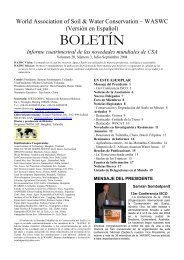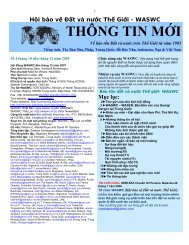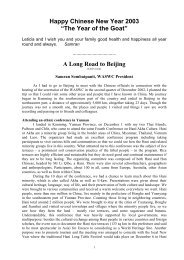Soils of the European Union - European Soil Portal - Europa
Soils of the European Union - European Soil Portal - Europa
Soils of the European Union - European Soil Portal - Europa
Create successful ePaper yourself
Turn your PDF publications into a flip-book with our unique Google optimized e-Paper software.
4.21 SolonetzesGeographical distributionAreas <strong>of</strong> Solonetz soils are similar to those <strong>of</strong> Solonchaks in <strong>the</strong> <strong>European</strong> <strong>Union</strong>, covering nearly 10,000 km 2 (0.24%).However, <strong>the</strong> geographic extent is somewhat different: Solonetzes are soils <strong>of</strong> <strong>the</strong> Charpatian Basin, Romania and Bulgaria.Three units <strong>of</strong> <strong>the</strong> Reference <strong>Soil</strong> Group have coverage with <strong>the</strong> same order <strong>of</strong> magnitude (Table 4.21, Figure 4.21).Table 4.21 Area <strong>of</strong> <strong>the</strong> second level units <strong>of</strong> Solonetz soilsUnits in <strong>the</strong> Reference <strong>Soil</strong> Groupin <strong>the</strong> EUCodes <strong>of</strong>soil unitsArea in <strong>the</strong> EUkm 2Gleyic Solonetz SNgl 2749Haplic Solonetz SNha 2419Mollic Solonetz SNmo 4689Gleyic Solonetzes are characteristic for Romania and are <strong>the</strong> dominant soils in 13 polygons. (In a fur<strong>the</strong>r 21 polygons <strong>the</strong>yare associated and form inclusions in ano<strong>the</strong>r 12.) Haplic Solonetzes can be found in both on <strong>the</strong> Great Hungarian Plain(Nagyalföld) and in Bulgaria. They are dominant in 13 mapping units <strong>of</strong> <strong>the</strong> latter. Mollic Solonetz is <strong>the</strong> main type <strong>of</strong> saltaffected soil in Hungary and it can be found close to <strong>the</strong> Lake Neusiedl in Austria.47.57%27.89%SNglSNhaSNmo24.54%Figure 4.21 Share <strong>of</strong> <strong>the</strong> second level soil units in <strong>the</strong> area <strong>of</strong> Solonetz soilsGlobal referenceSolonetz are normally associated with flat lands in a climate with hot, dry summers or with former coastal deposits thatcontain a high proportion <strong>of</strong> salt. Global coverage <strong>of</strong> Solonetz soils accounts to approximately 1.35 million km 2 .Solonetz soils are strongly alkaline with subsurface horizon <strong>of</strong> clay minerals, well developed columnar structure and highproportion <strong>of</strong> adsorbed sodium and/or magnesium ions. The presence <strong>of</strong> free soda in soil is associated with alkalinereaction (field-pH > 8.5). Under such conditions, organic matter has a tendency to dissolve and move through <strong>the</strong> soil bodywith moving soil moisture. The remaining mineral soil material is bleached and in <strong>the</strong> extreme case a clear eluvial horizonmay form directly over <strong>the</strong> dense natric subsurface horizon. Black spots <strong>of</strong> accumulated organic matter can be seen in manySolonetz, at some depth in <strong>the</strong> natric horizon. The dense natric (clay) illuviation horizon poses an obstacle to waterpercolating downward by <strong>the</strong> dispersion <strong>of</strong> soil materials.Land use options <strong>of</strong> Solonetz soils depend largely on <strong>the</strong> depth and properties <strong>of</strong> <strong>the</strong> surface soil. However, mostSolonetzes are Solonetz are problem soils when used for arable agriculture.Internationally, Solonetz are referred to as alkali soil and sodic soil, Sols sodiques à horizon B et Solonetz solodisés(France), Natrustalfs, Natrustolls, Natrixeralfs, Natrargids or Nadurargids (<strong>Soil</strong> Taxonomy).52


